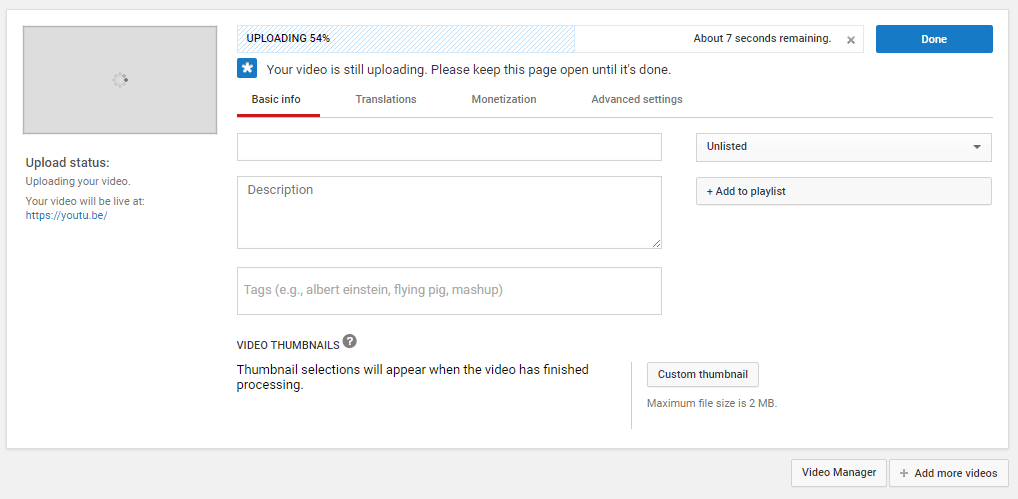When we talk about search engine optimization (SEO), we tend to think about classic search engines such as Google, Bing or Yahoo. But there are now a whole range of other search engines which you should be thinking about too, whether you want to boost a product on Amazon or promote an app or podcast on iTunes.
And when it comes to video content, YouTube is clearly no 1. With over 300 hours of new video material uploaded every MINUTE and more than 30 million visitors per day, YouTube optimization is more important than ever.
What’s more, videos don’t just rank in YouTube’s own results; the very best appear in Google’s SERPs as well, so it’s doubly worth it!

When dealing with YouTube SEO, we need to distinguish between active and passive ranking factors. We can directly influence active factors – so allow me to present seven simple tips which will help you boost your YouTube rankings.
Active Ranking Factors

1. Video title
It goes without saying that the title is an important ranking factor for a video! The first thing to do is to ensure that the keyword is as close to the beginning as possible – but not at the expense of legibility! Titles have to be attractive and enticing for the user so don’t just stick four random keywords together. The aim is make users click on the video which they won’t do if the title makes no sense or looks obviously spammy.
2. Description
A descriptive text is displayed underneath every video which you can compose yourself. The same principles apply – the most important keywords should appear as close to the start as possible without reducing legibility. The description should be understandable and should make the user curious.
Don’t limit yourself to just one or two sentences. To get the most out of your description, summarize your video content in the form of a short text in which your main keyword appears three or four times. Also consider integrating a backlink to your website in the visible area of the text.
3. Tags
Tags can be applied to every video and should include your most important keywords. Use YouTube’s tag suggestion function to help you.
Tip: You can check out which tags your competitors are using on their videos by finding the meta tags “og:video:tag” in the HTML source text.
4. Subtitles / transcription
YouTube allows you to add the spoken text of the video as subtitles. Translations in other languages can also be added.
This can be done in two ways:
1. Generate automatic subtitles
The quality of automatically generated subtitles is getting better and better but is still some way off being perfect. The results can depend heavily on audio quality, pronunciation and lexicon used.
2. Add your own transcript
Of course, you could transcribe the video yourself but external transcription services are available too. Alternatively, you can also use YouTube’s integrated transcription service by clicking on “buy new subtitles.”
Tip: Spoken text should also contain keywords and search terms – and ideally towards the start of the video. So it’s worth summarizing the content briefly at the very beginning. The keywords will therefore also appear in the subtitles.
More Active Ranking Factors
5. Video file name
Before you upload your video, make sure the file has an appropriate name which contains your main keyword. But be careful – the name cannot be changed later. Admittedly, file names don’t have a great effect on rankings but such particularities could still make the difference!
6. Video quality
When several videos all deal with the same topic, video quality can make the difference. I recommend 720p at least. 1,080p is even better.
7. Embed, link and share
If people can’t see your video, they can’t watch it either! Give it that extra push by embedding on your website or blog or by linking to it on social media. The increased attention will have a positive effect on rankings.
This list is not exhaustive when it comes to video ranking tips but they should help you notice significant improvements.
Passive ranking factors
In addition to active factors which you can directly influence yourself, other passive factors as well as user signals can also help boost your video rankings.
1. Views
Obviously, the number of views gives an indication of how popular a video is and has a direct effect on rankings. If you notice a high number of views right from the start, that will quickly have a positive effect on your rankings.
2. Viewing duration
Perhaps more intuitive than the basic number of views is the average viewing duration – in other words, how long users watch a video before turning off. The more viewers watch until the end, the better the content.
3. Likes and dislikes
Registered YouTubers can rate videos with a thumbs-up or thumbs-down. Without wanting to state the obvious – the more positive “likes”, the better!
Tip: Add a direct “call to action” at the end of the video, directly telling viewers to rate your video!
4. Comments
A key indicator of relevance (although not necessarily quality!) is the number of comments left by viewers. Here as well you can directly request that viewers leave comments.
5. YouTube channel
The more subscribers a YouTube channel has, the higher a video will rank.
Conclusion
Video marketing is growing in popularity and is a valuable traffic source. YouTube SEO is not a new phenomenon of course but the competition remains much lower than on Google. Nevertheless, you still need to get the basics right if you want to stick out from the crowd. In some niches, the basics are all you need to reach the top!

